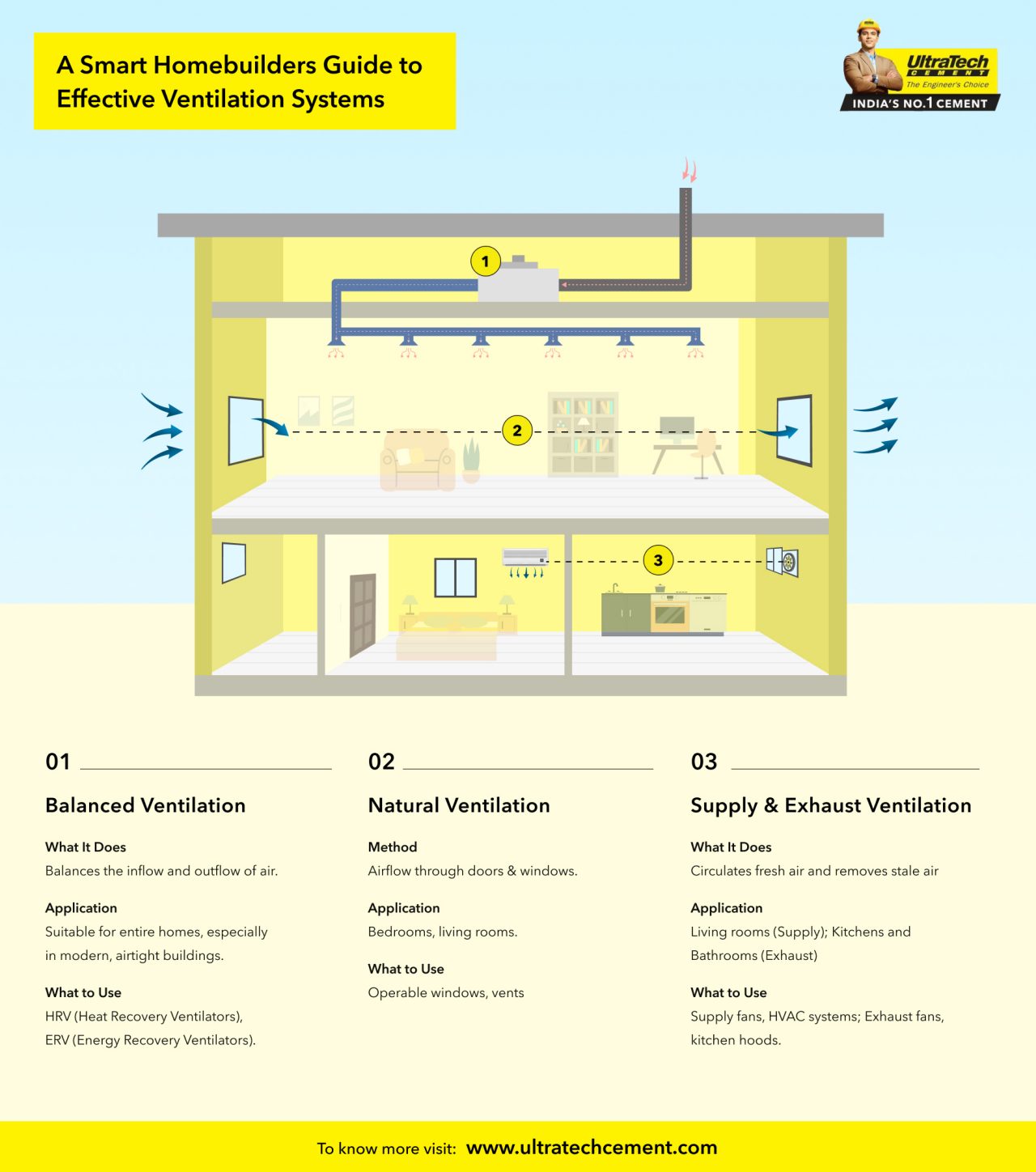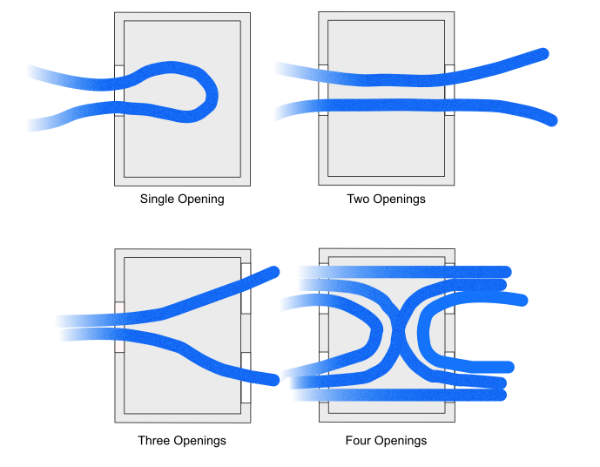Home Ventilation Melbourne Solutions That Support Sustainable Living
Checking Out Ingenious Solutions for Ideal Home Ventilation Solutions
Home air flow plays an essential role in preserving wellness and convenience within living spaces. With developments in modern technology, innovative services are arising to maximize these systems. Smart air flow, energy recovery ventilators, and progressed filtration are reshaping exactly how air top quality is taken care of - Home Ventilation Melbourne. The assimilation of these modern technologies raises questions about their efficiency and versatility in different home atmospheres. What ramifications do these advancements hold for future living standards?
The Relevance of Home Ventilation for Health And Wellness and Comfort
Although often overlooked, home air flow plays a crucial duty in keeping both health and convenience within residential spaces. Appropriate ventilation is essential for the blood circulation of fresh air, which assists to weaken indoor pollutants such as unpredictable organic compounds, irritants, and odors. Without proper air flow, these contaminants can build up, resulting in respiratory system problems and various other health and wellness issues. In enhancement, efficient ventilation adds to controling humidity degrees, protecting against mold development and architectural damage. By ensuring a well balanced exchange of air, citizens can delight in a more positive indoor setting, enhancing total wellness. Appropriate ventilation can enhance power performance by decreasing the requirement for too much heating or cooling, inevitably resulting in reduced energy expenses and a more sustainable living space.
Smart Ventilation Systems: Harnessing Innovation for Effectiveness
Smart ventilation systems represent a substantial development in home air administration, leveraging IoT assimilation for enhanced control. These systems not only promote power effectiveness yet also use remote surveillance abilities, enabling users to enhance their interior environments flawlessly. By using modern technology, property owners can attain improved air top quality while reducing power consumption.
IoT Integration Benefits
How can IoT assimilation change conventional ventilation systems right into extremely effective clever solutions? By integrating Net of Points (IoT) technology, ventilation systems can accomplish real-time monitoring and control, improving their functional performance. Sensing units positioned throughout a home collect data on air temperature level, high quality, and humidity, permitting for automated changes based upon existing problems. This prompt responsiveness causes boosted interior air top quality and comfort levels. Furthermore, IoT-enabled systems can interact with other smart home devices, developing a natural community that enhances energy use. Users can also gain access to and handle their air flow systems remotely through smart devices, providing benefit and boosted control. On the whole, IoT combination represents a significant development, bringing intelligence and versatility to standard ventilation methods.
Energy Effectiveness Includes
As energy effectiveness ends up being a vital emphasis in contemporary home design, progressed ventilation systems offer cutting-edge attributes that substantially decrease energy intake. These smart air flow systems use sensors to keep an eye on indoor air moisture, top quality, and temperature levels, instantly adjusting air flow to keep optimal conditions. By utilizing power recuperation ventilators (ERVs), they capture and reuse power from outgoing air, reducing home heating and cooling down demands. Variable rate fans additionally enhance efficiency by changing their procedure based on real-time needs, stopping unneeded energy waste - Home Ventilation Melbourne. In addition, programmable timers and occupancy sensors guarantee that ventilation runs only when needed, adding to lower utility expenses. Collectively, these attributes represent a considerable innovation in developing energy-efficient and lasting living atmospheres
Remote Tracking Abilities
What advantages do remote monitoring capabilities offer modern-day home air flow systems? These abilities enable house owners to track indoor air quality and system performance in actual time, boosting general efficiency. By providing data on humidity, air, and temperature toxins, smart air flow systems make it possible for proactive adjustments, guaranteeing perfect problems. On top of that, remote tracking promotes upkeep alerts, recognizing potential issues before they escalate, thereby decreasing repair prices and downtime. Customers can access system analytics via mobile applications, permitting hassle-free control also when away from home. This technical combination not only advertises power performance but likewise adds to a healthier living setting. Ultimately, remote surveillance capabilities stand for a significant improvement in home ventilation, lining up with the growing need for smart home modern technologies.
Energy Recuperation Ventilators: Optimizing Energy Savings
Power healing ventilators (ERVs) play a vital role in enhancing home power efficiency via efficient heat exchange. By transferring thermal power between inbound and outbound air, these systems markedly lower overall power consumption. This ingenious approach not just keeps interior air high quality but also adds to reduce utility prices.
Efficiency of Heat Exchange
While keeping interior air quality is necessary for health and convenience, the efficiency of warm exchange in power recuperation ventilators (ERVs) plays an essential function in making the most of energy cost savings. The key function of an ERV is to transfer heat and dampness between outgoing and incoming air streams, which optimizes indoor problems while decreasing power loss. High-efficiency warmth exchangers can substantially minimize the tons on heating and cooling systems by reclaiming energy that would otherwise be lost. The efficiency of these systems is often measured by their core temperature currency exchange rate, which can vary based on style and products utilized. By concentrating on sophisticated warmth exchange technologies, home owners can enhance their air flow systems, useful content bring about improved energy effectiveness and expense reductions over time.
Reduced Energy Consumption
Minimizing energy consumption is a key advantage of power recuperation ventilators (ERVs), as hop over to here they successfully recycle thermal power from worn down air. By moving warmth between inbound and outbound jet stream, ERVs lessen the demand for extra heating or cooling, leading to substantial energy financial savings. This process not just minimizes utility expenses but likewise lessens the ecological impact linked with higher power use. In enhancement, ERVs maintain regular indoor air top quality without compromising thermal convenience, creating a well balanced living environment. By incorporating ERVs right into home ventilation systems, home owners can accomplish better energy effectiveness, enabling a lasting approach to indoor air monitoring while benefiting from lower power costs. Eventually, ERVs stand for an engaging service for energy-conscious customers.
Advanced Filtration Technologies for Cleaner Indoor Air
As interior air quality comes to be significantly recognized as a critical element of health and wellness, progressed filtration technologies are emerging as important tools for ensuring cleaner atmospheres. These innovations consist of high-efficiency particle air (HEPA) filters, turned on carbon filters, and electrostatic precipitators, each designed to efficiently catch air-borne contaminants, irritants, and unpredictable natural substances (VOCs) HEPA filters can catch fragments as tiny as 0.3 microns, greatly decreasing allergens like dust mites and animal dander. Triggered carbon filters master adsorbing smells and chemical vapors, adding to a fresher interior environment. Furthermore, electrostatic precipitators use electrical fees to eliminate bits, supplying an energy-efficient option. By incorporating these sophisticated filtering systems, home owners can enhance indoor air quality and promote much healthier space.
The Role of Sensors in Maximizing Airflow and Quality
How can sensors transform the administration of interior air high quality? Sensors play an essential function in improving air movement and boosting interior settings. By constantly monitoring variables such as moisture, temperature, and degrees of toxins, they supply real-time data that informs air flow systems. This information enables automatic adjustments to air movement, making sure sufficient circulation and lessening the accumulation of impurities. Furthermore, advanced sensing units can spot specific air high quality issues, motivating instant responses to improve comfort and health. The combination of these devices right into ventilation systems enables a more receptive and efficient administration strategy, decreasing power consumption while preserving perfect air top quality. Ultimately, sensing units function as a vital part in creating much healthier interior spaces with precise air flow regulation.
Integrating Air Flow With Smart Home Systems
While lots of house owners seek benefit and performance, integrating ventilation systems with clever home modern technology offers a cutting-edge solution to managing indoor air high quality. By attaching ventilation units to wise home centers, homeowners can automate air quality tracking and control air flow based upon real-time information. These systems can respond to changes in temperature level, toxin, and humidity levels, making certain suitable interior problems. Smart thermostats can work in tandem with ventilation systems to boost energy effectiveness, lowering costs while keeping comfort. Home owners can also from another location control their ventilation setups through mobile applications, supplying flexibility and tranquility of Resources mind. Eventually, this integration not only simplifies administration but substantially improves the general living setting, making it a beneficial addition to modern homes.
Future Fads in Home Ventilation Solutions
Arising technologies and increased recognition of interior air quality are forming the future of home air flow solutions. One substantial trend is the combination of expert system, making it possible for systems to adjust air flow based upon real-time data and tenancy patterns. Furthermore, power healing ventilators are acquiring grip, supplying efficient air exchange while minimizing power loss. The use of environmentally friendly materials and layouts is also growing, straightening with sustainability goals. Smart sensors that check contaminants and moisture levels are becoming criterion, enabling homeowners to preserve optimal indoor atmospheres. Modular and scalable systems are arising, providing personalized options for numerous home sizes and setups. With each other, these improvements promise to boost comfort, effectiveness, and health in domestic rooms
Frequently Asked Concerns
Just how Typically Should I Tidy My Home Ventilation System?

The regularity of cleaning a home air flow system differs based upon use and atmosphere. Usually, it is recommended to clean up the system every 3 to six months to preserve optimal air high quality and system efficiency.
Can Poor Ventilation Reason Mold Development Inside?

What Are the Indicators of Inadequate Home Ventilation?
Indications of poor home ventilation include consistent smells, increased humidity levels, condensation on home windows, noticeable mold growth, and a general feeling of stodginess. These signs frequently recommend that air blood circulation wants for preserving a healthy and balanced indoor atmosphere.
Just How Can I Improve Ventilation in Older Residences?
To improve ventilation in older homes, one may consider setting up exhaust followers, using all-natural airflow with home windows, sealing spaces for much better air control, and including air purifiers to enhance interior air top quality properly.
Are Do It Yourself Air Flow Solutions Effective and Safe?

Smart air flow, power recuperation ventilators, and advanced filtration are reshaping exactly how air top quality is managed. As energy efficiency becomes an important emphasis in modern-day home layout, advanced air flow systems offer ingenious functions that substantially minimize power intake. By integrating ERVs into home air flow systems, home owners can achieve better power performance, making it possible for a lasting strategy to interior air monitoring while benefiting from reduced power costs. The combination of these tools into ventilation systems allows for a more reliable and receptive administration approach, lowering power consumption while maintaining ideal air top quality. While lots of property owners seek ease and effectiveness, integrating air flow systems with clever home technology offers an innovative remedy to handling indoor air quality.